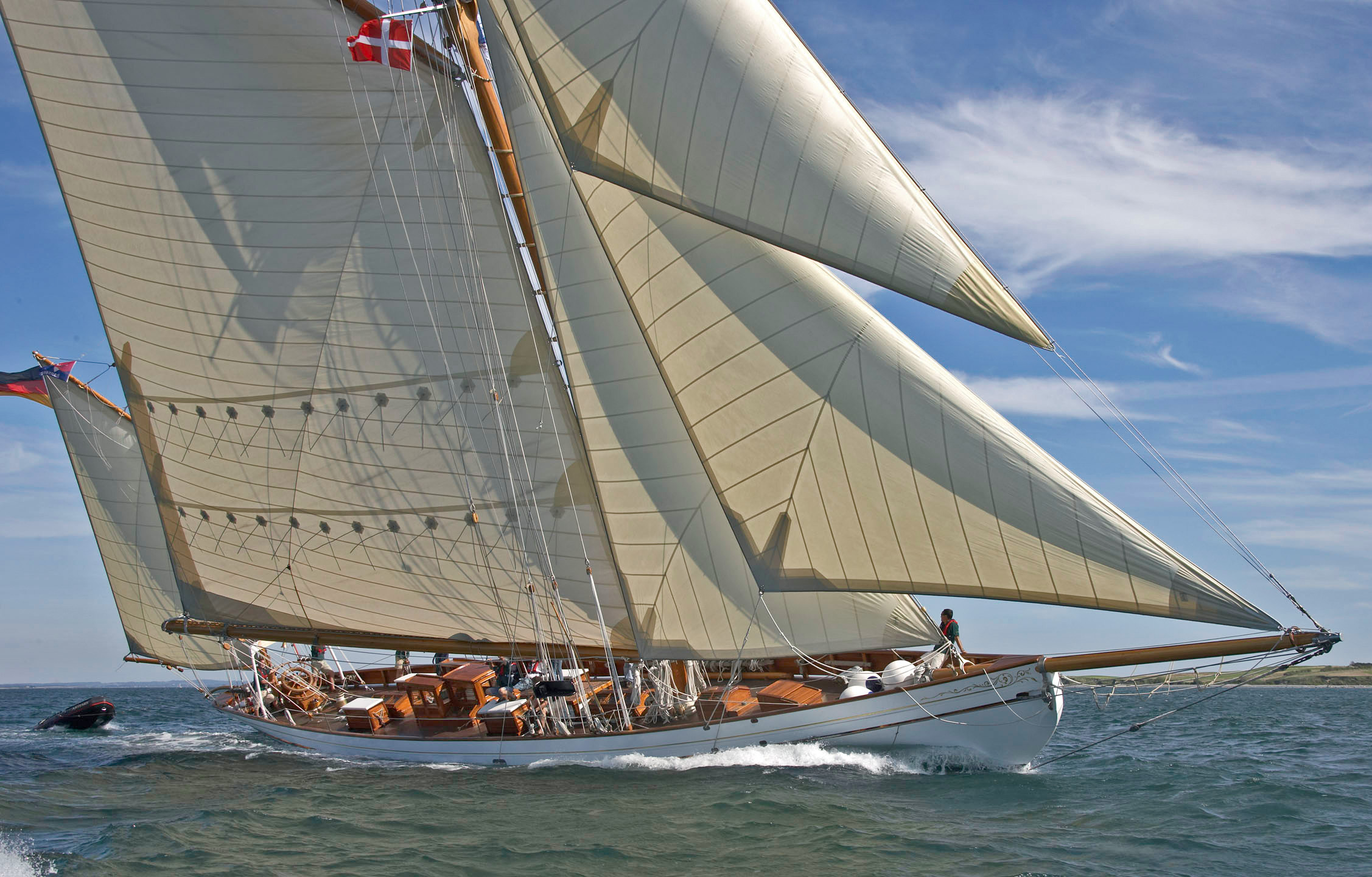
Though resurrected just three years ago following an extensive period of rebuild and restoration, the elegant and rare 95ft Summers & Payne gaff yawl, Artemis, has swiftly fallen upon hard times once again. The project’s surveyor, Jendrik Odenwald, explains what has happened…
Artemis was born in 1900 at the renowned yacht builders, Summers & Payne of Southampton, UK. It was a time when large, gentleman’s yachts such as GL Watson’s Thistle and Britannia were majestically locking horns with each other to the delight of the yachting world. These yachts, with large overhanging sterns, long bowsprits and powerful rigs were designed to be fought doggedly against each other by highly trained crews, and, as an integral part of this heritage, Artemis is a piece of yachting history.
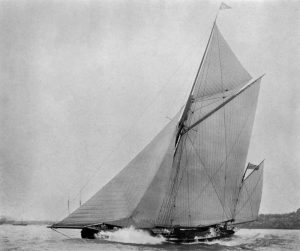
During the Second World War she sacrificed her lead keel to aid the British war effort and having survived those difficult times she ended up as a houseboat, lying at West Mersea in Essex. The liveaboard owner at this time was a lady in later years, who did her best to take care of her upkeep, and she treasured her so much that every Sunday this lady would raise the original Artemis flag to signal time for tea.
In 1994, the current owner, the head of a German-based trust that preserves and restores historic vessels, found Artemis in need of much repair lying in the mud that she had occupied for many years. It’s likely that sitting supported in this way had prevented her deteriorating as much as she might, as she could not completely sink and the tide that entered her bilges rose only to just below the floorboards.
Some parts of the boat were still original, others had been changed over the years and some items, such as the rig and the steering wheel, were completely missing. As part of his research the current owner heard a story stating that the original steering wheel had been taken some years earlier to be fitted to a Thames barge. Eventually, the skipper of that Thames barge was located and diplomatic discussion then commenced around ownership of the wheel. Despite careful negotiations, in the end the barge skipper made his position clear by saying, “Giving you the wheel is like cutting off my left hand”. So pictures and measurements were taken in order to build an accurate replica.
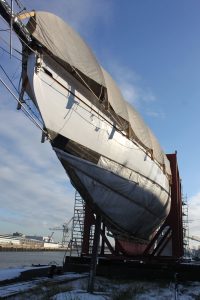
After taking all that remained of Artemis to Germany, the owners’ trust began preparations by surveying the vessel so that the true extent of the work required could be understood. The refit was to be financed by a group of interested parties, while the work was overseen by professional yacht and ship-builders as well as various classification societies. The work would be carried out by a social organization whose aim was training youths in the art of boat building under an apprenticeship scheme.
With the completed survey in hand it was clear that there was a substantial amount of radical work to be done. Below the waterline the refit resembled a new-build – new fastenings, frames and planks – which, due to the nature of the project’s operation took almost ten years to complete. When the hull planking was finished it was sheathed in copper, as it had been in Artemis’ early years, and the empty boat was put back into the water prior to the internal fit-out. This kept the boat lying in the waters of a dock in the southern part of Hamburg for some five years more.
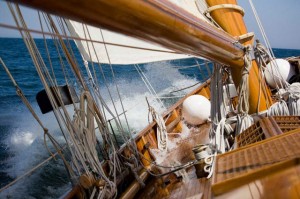
In 2010 the work was eventually completed, and Artemis sailed once again to rejoicing and with much pride from all participants and sponsors, but, alas, this story does not yet conclude with a happy ending…
Just three months after her launch, two crew members were cleaning outside the hull, when they discovered some soft areas in the planking at the transom. Immediately the boat was inspected and more rotten wood was discovered. Artemis went straight back into the shipyard where the results of a survey found that parts of the frames and planks had become infected by fungus. Removing instantly the infected planks, the trust conceived a plan to repair the affected areas, but frustration among the sponsors arose and some refused to financially support these repairs. Others soon followed in withdrawing support until finally all means were exhausted and the heavy-hearted decision was taken to sell her.
A professional investigation by a wood expert threw light onto this sad story.
When the boat was rebuilt it was done using exactly the original size of hull planks and, as is normal, once the hull was launched, it let in water until the planks had swelled. Damage to planking by fungus is quite well documented with boats lying in freshwater lakes and rivers, especially during summer when the fungus grows as humidity and temperature rise; the dock in which Artemis was lying while the fit-out was completed was not seawater and was also heated during winter. The heat, the humidity and the foul water were the right environment for the fungus to grow.
Today, Artemis sits in a large cradle on a pier in Hamburg, covered with a professional tent and all systems are kept supplied with power. The hull planks are removed and covered with plastic in order to allow air to flow through the entire boat and to dry her out. Most parts of the infected wood are already removed and the areas around treated against possible infection.
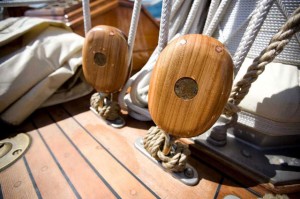
Artemis needs a new owner: a classic enthusiast who wants to help another beautiful classic yacht to survive. As the interior is totally intact and the systems in working order, the whole project is well containable and all the defects are now clearly understood. One should count on replacing around 12 frames and the hull needs to be re-planked, at least below the waterline.
The rest of this wonderful lady is impeccable: all restored, all finished, all new! Most of the equipment such as rig, deck fittings and interior has been used for just three months. There is no need for re-building any parts on the deck and the layout is to the original plan.
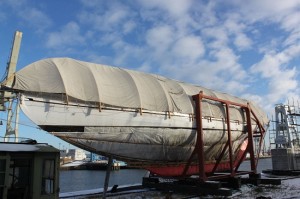
All in all she is a strong, powerful and historically important yacht that is not far from being ready to supply guests and crew with exhilarating sailing and absolute luxury.
Once sailing again she is capable of comfortably undertaking long voyages as well as winning races. I personally believe that for the right person or company, it would be an easy task to get Artemis beautifully restored and sailing once again – it is no more than she deserves. Please help.
